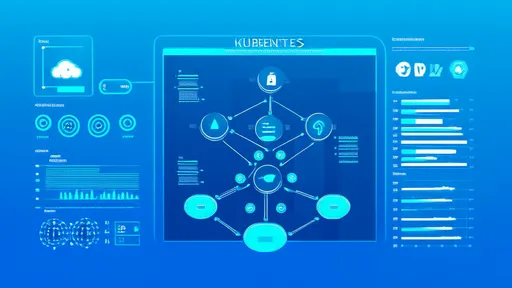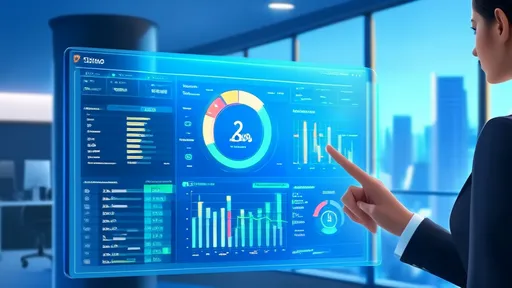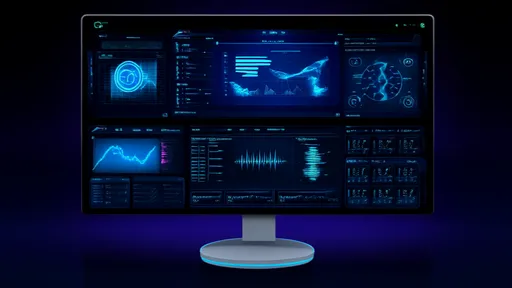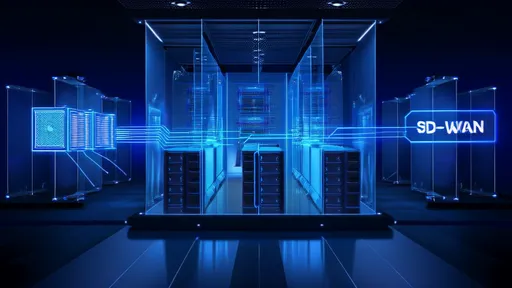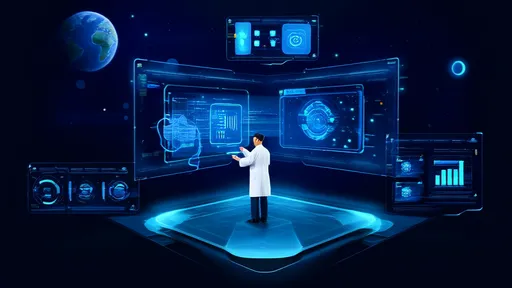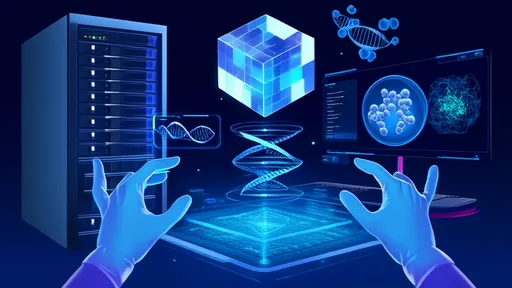The evolution of cloud-native databases has entered a new phase with the rise of serverless architectures. What began as a shift from on-premise data centers to cloud-hosted instances has now matured into a more dynamic, cost-efficient, and scalable paradigm. The serverless model represents a fundamental rethinking of how databases are provisioned, managed, and utilized, moving away from static resource allocation toward an on-demand, pay-per-use approach. This transformation is not merely a technical upgrade but a strategic enabler for businesses aiming to thrive in an unpredictable, data-intensive landscape.
In the early days of cloud databases, the primary advantage was operational simplicity. Companies no longer needed to manage physical hardware, but they still had to deal with virtual machines, instance sizing, and capacity planning. The cloud provided elasticity, but it was often coarse-grained—requiring manual intervention or pre-configured scaling policies. This left many organizations over-provisioning resources to avoid performance issues, leading to unnecessary costs, or under-provisioning, resulting in poor user experiences during traffic spikes. The need for a more responsive, automated, and fine-grained solution paved the way for serverless database technologies.
Serverless databases decouple compute and storage, allowing each to scale independently based on actual workload demands. When a query is executed, compute resources spin up automatically to process the request, and they scale down to zero during periods of inactivity. Storage, on the other hand, remains persistent and seamlessly expands as data grows. This architecture eliminates the need for manual scaling operations and reduces costs significantly since users only pay for the compute and storage they actually consume. It also improves availability and fault tolerance, as the system can dynamically redistribute workloads across available resources without human intervention.
One of the key drivers behind the adoption of serverless databases is the unpredictability of modern applications. From e-commerce platforms experiencing seasonal traffic surges to mobile apps going viral overnight, traditional database models struggle to keep pace with erratic demand. Serverless databases, with their inherent elasticity, ensure that performance remains consistent even under the most variable conditions. This capability is particularly valuable for development teams building microservices-based applications, where each service may have its own unique database requirements and usage patterns.
Moreover, the serverless approach reduces the operational burden on development and DevOps teams. By automating routine tasks such as patching, backups, and failover, serverless databases allow engineers to focus on building features rather than managing infrastructure. This shift aligns perfectly with the principles of DevOps and continuous delivery, where speed and agility are critical. It also lowers the barrier to entry for startups and small businesses, which can now leverage enterprise-grade database technologies without investing in specialized database administrators or costly infrastructure.
Despite these advantages, the journey to serverless databases is not without challenges. Cold starts—the latency incurred when initializing compute resources after a period of inactivity—can impact performance for sporadic workloads. Additionally, the decoupling of compute and storage introduces new complexities in data consistency and transaction management. Vendors are addressing these issues through innovations like pre-warmed pools of compute instances and advanced consensus protocols, but these solutions are still evolving. As the technology matures, we can expect these hurdles to become less significant.
Another consideration is the lock-in effect. Serverless databases are often tightly integrated with their respective cloud providers' ecosystems, making migration between platforms difficult. While this integration offers benefits in terms of seamless operation with other cloud services, it does reduce portability. Organizations must weigh the trade-offs between convenience and flexibility when adopting a serverless database strategy. Some are opting for multi-cloud or hybrid approaches to mitigate this risk, though these setups come with their own complexities.
Looking ahead, the serverless evolution is likely to continue with greater intelligence and automation. We are already seeing the integration of machine learning for predictive scaling and optimization, where the system anticipates workload patterns and provisions resources proactively. Future iterations may include more advanced features like autonomous tuning, self-healing capabilities, and deeper integration with edge computing environments. These advancements will further reduce the operational overhead and enhance the performance of serverless databases.
In conclusion, the serverless transformation of cloud-native databases marks a significant milestone in the evolution of data management. It offers unparalleled scalability, cost efficiency, and operational simplicity, enabling businesses to adapt quickly to changing demands. While challenges remain, the ongoing innovations in this space promise to address these issues and unlock new possibilities. As more organizations embrace serverless architectures, we can expect this trend to reshape not only how databases are built and managed but also how applications are designed and delivered in the cloud era.
In today's rapidly evolving cybersecurity landscape, organizations face increasingly sophisticated threats that traditional perimeter-based defenses struggle to contain. The concept of microsegmentation has emerged as a critical component of zero trust architecture, fundamentally transforming how enterprises protect their digital assets. Unlike conventional security approaches that focus on building strong outer walls, microsegmentation operates on the principle that no entity—whether inside or outside the network—should be automatically trusted.
In the ever-evolving landscape of container orchestration, Kubernetes has firmly established itself as the de facto standard for managing containerized applications at scale. One of its most powerful features is the ability to automatically scale applications in response to fluctuating demand, ensuring optimal performance while controlling costs. However, implementing an effective autoscaling strategy requires more than just enabling the feature; it demands a thoughtful approach grounded in proven best practices.
In today's digital landscape, cloud computing has become the backbone of modern business operations, offering unparalleled scalability and flexibility. However, this convenience comes at a cost—literally. As organizations increasingly migrate to the cloud, managing and controlling cloud expenditures has emerged as a critical challenge. Many companies find themselves grappling with unexpected bills, wasted resources, and a lack of visibility into where their cloud dollars are going. This is where FinOps, a cultural practice and operational framework, steps in to bring financial accountability to the world of cloud spending.
The cybersecurity landscape continues to evolve at a breakneck pace, with containerization sitting squarely at the heart of modern application development. As organizations increasingly deploy applications using technologies like Docker and Kubernetes, the security of the underlying container images has become a paramount concern. This has spurred the development and maturation of a robust market for container image vulnerability scanning tools, each promising to fortify the software supply chain. A comprehensive evaluation of these tools reveals a complex ecosystem where capabilities, integration depth, and operational efficiency vary significantly.
As enterprises continue their digital transformation journeys, the debate between SD-WAN and SASE for hybrid cloud connectivity has become increasingly prominent. These two technologies represent different generations of networking solutions, each with distinct approaches to addressing the complex challenges of modern distributed architectures. While SD-WAN emerged as a revolutionary improvement over traditional MPLS networks, SASE represents a more comprehensive framework that integrates networking and security into a unified cloud-native service.
The evolution of cloud-native databases has entered a new phase with the rise of serverless architectures. What began as a shift from on-premise data centers to cloud-hosted instances has now matured into a more dynamic, cost-efficient, and scalable paradigm. The serverless model represents a fundamental rethinking of how databases are provisioned, managed, and utilized, moving away from static resource allocation toward an on-demand, pay-per-use approach. This transformation is not merely a technical upgrade but a strategic enabler for businesses aiming to thrive in an unpredictable, data-intensive landscape.
In the rapidly evolving landscape of cloud-native computing, the demand for robust observability has never been more critical. As organizations migrate to dynamic, distributed architectures, traditional monitoring tools often fall short in providing the depth and real-time insights required to maintain system reliability and performance. Enter eBPF—extended Berkeley Packet Filter—a revolutionary technology that is redefining how we achieve observability in cloud-native environments. Originally designed for network packet filtering, eBPF has evolved into a powerful kernel-level tool that enables developers and operators to gain unprecedented visibility into their systems without modifying application code or restarting processes.
The landscape of enterprise IT has undergone a seismic shift with the widespread adoption of multi-cloud and hybrid cloud strategies. While this approach offers unparalleled flexibility, cost optimization, and avoids vendor lock-in, it introduces a formidable layer of complexity. At the heart of this complexity lies the significant challenge of managing compatibility across disparate cloud environments. Cross-cloud management platforms have emerged as the central nervous system for this new reality, but their effectiveness is directly tied to their ability to navigate a labyrinth of compatibility issues.
The economic implications of serverless computing have become a central topic in cloud architecture discussions, shifting the conversation from pure technical implementation to strategic financial optimization. As organizations increasingly adopt Function-as-a-Service (FaaS) platforms, understanding the nuanced cost structures and optimization opportunities has become critical for maintaining competitive advantage while controlling cloud expenditures.
The landscape of software development has undergone a seismic shift with the proliferation of cloud-native architectures. As organizations race to deliver applications faster and more reliably through CI/CD pipelines, a critical challenge has emerged: security. The traditional approach of bolting on security measures at the end of the development cycle is no longer tenable. It creates bottlenecks, delays releases, and often results in vulnerabilities being discovered too late, when remediation is most costly and disruptive. In response, a transformative strategy known as "shifting left" has gained significant traction, fundamentally rethinking how and when security is integrated into the software development lifecycle.
The landscape of software testing is undergoing a profound transformation, driven by the relentless integration of artificial intelligence. One of the most impactful and rapidly evolving applications of AI in this domain is the automation of test case generation. This is not merely an incremental improvement to existing processes; it represents a fundamental shift in how development teams approach quality assurance, promising to accelerate release cycles while simultaneously enhancing the robustness and coverage of testing regimens.
In the ever-evolving landscape of artificial intelligence, voice generation technology has emerged as one of the most captivating and, at times, unsettling advancements. The ability to clone and generate highly realistic human voices is no longer confined to the realms of science fiction; it is a present-day reality with profound implications. This technology, often referred to as voice cloning or neural voice synthesis, leverages deep learning models to analyze, replicate, and generate speech that is indistinguishable from that of a real person. The process begins with the collection of a sample of the target voice, which can be as short as a few seconds or as long as several hours, depending on the desired fidelity and the complexity of the model being used.
The semiconductor industry stands at an inflection point where traditional chip design methodologies are increasingly strained by the complexity of modern architectures. As Moore's Law continues its relentless march, the once-manual processes of floorplanning and routing have become prohibitively time-consuming and error-prone. In this challenging landscape, reinforcement learning has emerged not merely as an experimental approach but as a transformative force in automating and optimizing chip layout.
In laboratories and research institutions across the globe, a quiet revolution is underway as artificial intelligence becomes an indispensable partner in scientific discovery. What was once the domain of human intuition, years of trial and error, and painstaking data analysis is now being accelerated at an unprecedented pace by machine learning algorithms and computational power. This transformation is not about replacing scientists but empowering them to ask bigger questions and uncover deeper truths about our universe.
In the ever-evolving landscape of artificial intelligence, a quiet revolution is taking place that promises to fundamentally reshape how machines understand the world. For decades, the field has been dominated by correlation-based approaches—powerful pattern recognition systems that excel at finding statistical relationships in data but fall painfully short when it comes to true understanding. The emerging discipline of causal machine learning seeks to change this paradigm, moving beyond mere correlations to uncover the actual mechanisms that drive phenomena in the real world.

